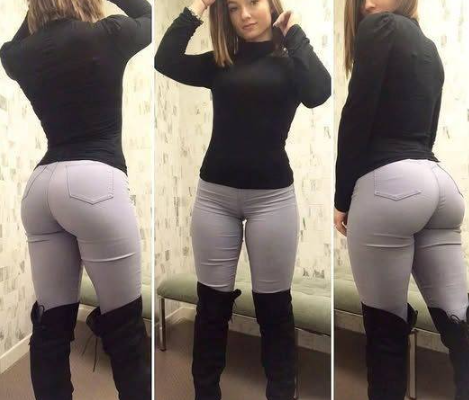The Power of Style: How Fashion Choices Reveal Personality, Confidence, and Inner Beauty
When people talk about fashion, it’s often dismissed as superficial—about chasing trends, following designers, or keeping up appearances. Yet style is far more than fabric, colors, or accessories. It is a language of its own, a personal narrative told without words. Every choice we make in clothing, whether intentional or subconscious, communicates something about who we are, how we feel, and even what we aspire to be. Style, at its core, is the outward expression of inner identity, confidence, and beauty.
Fashion as a Reflection of Personality
Our wardrobes are often mirrors of our personalities. Consider the friend who gravitates toward bold prints, statement jewelry, and daring colors. Such choices often reflect a lively, extroverted nature, someone who loves to be noticed and thrives in energetic spaces. In contrast, those who favor minimalism—clean lines, neutral palettes, and subtle details—may project calmness, thoughtfulness, and a preference for order.
Psychologists suggest that clothing choices can act as an extension of the self. Just as our handwriting reveals quirks of our character, so too does our fashion sense. A leather jacket might speak of rebellion, a floral dress of romanticism, and a tailored suit of discipline and ambition. Even when someone insists they “don’t care about clothes,” that choice—or refusal to engage—becomes a statement in itself, signaling priorities that lie elsewhere.
Fashion is not only about following trends but about selecting what resonates with us emotionally. These decisions weave together the story of who we are at any given moment.
Confidence Woven Into Clothing
There is an undeniable psychological connection between what we wear and how we feel. A phenomenon known as “enclothed cognition” demonstrates that clothing can influence our mindset. For example, people who wear professional attire often report feeling more confident, competent, and assertive. Athletes put on uniforms not only to signal their role but to adopt the focus and determination that the uniform represents.
For everyday individuals, this effect is equally powerful. The right outfit can turn a timid walk into a confident stride. A crisp blouse before an interview or a favorite dress on a first date can transform self-perception, shifting nervous energy into empowered presence. Even the simple act of wearing well-fitted clothes can boost self-esteem, reminding us that we deserve to feel comfortable and celebrated in our own skin.
Confidence, then, is not always something we must summon from within. Sometimes it is sparked by the way we present ourselves externally. Fashion becomes both armor and amplifier.
Inner Beauty Expressed Outwardly
Style is often mistaken as a mask, something that hides imperfections or distracts from insecurities. But at its most authentic, fashion does the opposite: it reveals inner beauty. When someone wears clothing that aligns with their personality and values, it radiates authenticity.
Think of a person who has fully embraced their unique style—perhaps it’s colorful headwraps that honor cultural heritage, vintage pieces that reveal a love for nostalgia, or sustainable fabrics that echo a commitment to environmental values. These choices allow us to see not just what the person looks like but what they care about, who they are, and what they find beautiful in the world.
Fashion allows us to bridge the gap between how we feel inside and how we want to be perceived. It is not about chasing perfection but about harmonizing the inner and outer selves. When that harmony is achieved, beauty transcends surface-level aesthetics.
Breaking Stereotypes Through Style
Another powerful aspect of fashion is its ability to challenge stereotypes. For decades, society has imposed rigid ideas about what is “appropriate” for gender, age, or body type. Yet individuals across the globe continue to resist those boundaries through fashion.
Consider the rise of gender-neutral clothing lines, which push back against the binary expectations of “men’s wear” and “women’s wear.” Or the growing movement of body positivity, where people proudly wear fitted, stylish clothing regardless of whether their bodies conform to narrow ideals. Older generations, too, are rejecting outdated rules about dressing “age-appropriately,” instead embracing vibrant, youthful styles that reflect vitality rather than limitation.
Through these fashion rebellions, individuals reclaim ownership of their narratives. They demonstrate that style is not about conforming to external pressures but about embracing individuality.
The Universal Yet Personal Nature of Style
One of the most fascinating things about fashion is that it is simultaneously universal and deeply personal. Everyone participates in style, whether they’re conscious of it or not. At the same time, no two individuals ever express it in quite the same way.
Globally, style is shaped by culture. In India, the sari reflects tradition and identity; in Japan, the kimono carries centuries of meaning. In the West, denim jeans have become a symbol of both rebellion and casual comfort. Each garment carries history, symbolism, and collective identity.
Yet within these cultural frameworks, individuals add their own twists. The way someone drapes a scarf, mixes patterns, or accessorizes tells a personal story. Fashion is both a shared cultural experience and a unique fingerprint.
The Emotional Dimension of Dressing
Beyond practicality, clothing connects deeply with emotion. People often treasure certain garments not because of their monetary value but because of the memories they hold. A wedding dress, a concert T-shirt, or even a hand-me-down sweater from a loved one carries meaning that transcends fabric.
Style choices can also serve as emotional regulation. On days when confidence feels low, wearing something bright or powerful can lift the mood. On days of grief, muted colors may feel appropriate. Clothing becomes a silent partner in our emotional lives, adapting to our internal landscapes.
Fashion as a Tool for Empowerment
Fashion’s power lies in its accessibility. While not everyone can afford luxury brands, everyone can create style. Thrift stores, DIY tailoring, and creative accessorizing allow people to express themselves regardless of budget.
In this sense, style becomes an equalizer. It is not about the price tag but about the intentionality. A well-loved, carefully chosen outfit can be more powerful than the most expensive couture. For many, this is where the confidence and beauty of style truly emerge: in the act of taking ownership over how we choose to show up in the world.
Looking Toward the Future of Style
As fashion evolves, so too does its role as a reflection of personality and confidence. The industry is increasingly shaped by inclusivity, sustainability, and authenticity. The rise of secondhand fashion, slow fashion movements, and digital wardrobes signal a shift away from mass conformity and toward individuality and responsibility.
Technology, too, is reshaping style. Virtual fitting rooms and AI-driven fashion advice make it easier for people to experiment and discover what makes them feel most themselves. In this new landscape, style continues to be not just about looking good but about feeling aligned with one’s values and identity.
Conclusion
Fashion is never just clothing. It is a language, a mirror, and a form of empowerment. Our choices in style reveal personality traits, bolster confidence, and allow inner beauty to shine outward. Whether through bold experimentation or quiet minimalism, every decision we make about what to wear tells the world something about who we are.
When we embrace fashion as a tool for self-expression rather than mere appearance, we unlock its true power. In doing so, we learn that style is not superficial at all—it is profoundly personal. It is the art of turning the invisible—our thoughts, our confidence, our inner beauty—into something visible. And that, perhaps, is the most powerful statement we can ever make without saying a word.




